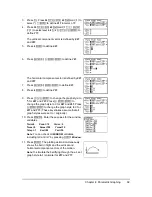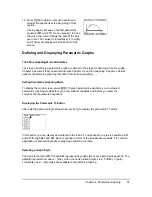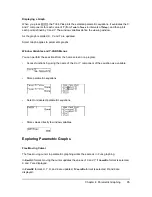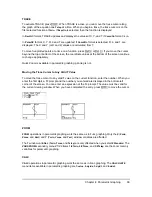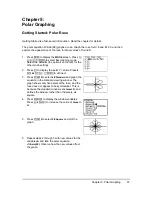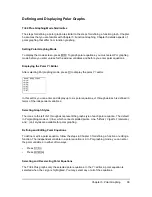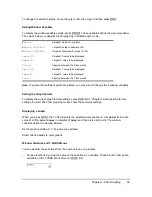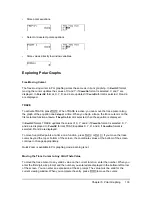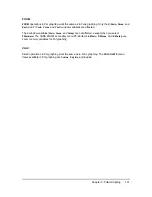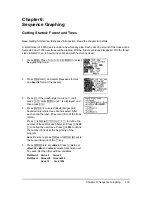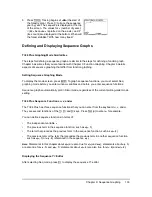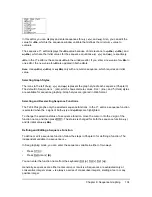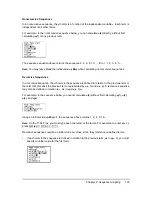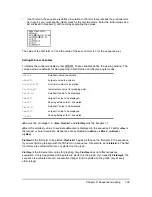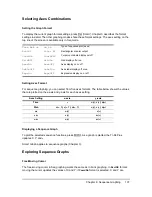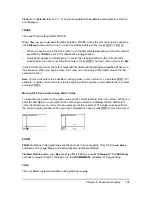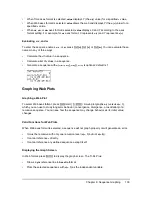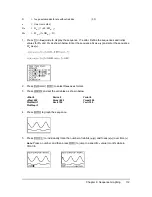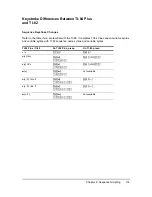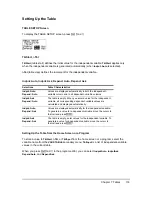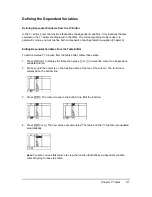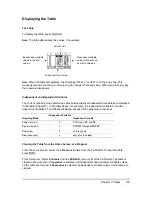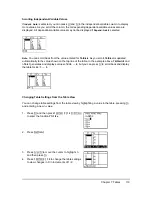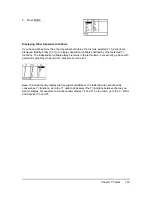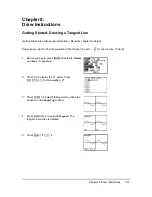
Chapter 6: Sequence Graphing
106
•
If each term in the sequence is defined in relation to the term that precedes the previous term,
as in
u(
n
N
2)
, you must specify initial values for the first two terms. Enter the initial values as a
list enclosed in brackets { } with commas separating the values.
The value of the first term is 0 and the value of the second term is 1 for the sequence
u(
n
)
.
Setting Window Variables
To display the window variables, press
p
. These variables define the viewing window. The
values below are defaults for Seq graphing in both Radian and Degree angle modes.
n
Min
must be an integer
|
0.
n
Max
,
PlotStart
, and
PlotStep
must be integers
|
1.
n
Min
is the smallest
n
value to evaluate.
n
Min
also is displayed in the sequence
Y=
editor.
n
Max
is
the largest
n
value to evaluate. Sequences are evaluated at
u(
n
Min)
,
u(
n
Min+1)
,
u(
n
Min+2)
, ... ,
u(
n
Max)
.
PlotStart
is the first term to be plotted.
PlotStart=1
begins plotting on the first term in the sequence.
If you want plotting to begin with the fifth term in a sequence, for example, set
PlotStart=5
. The first
four terms are evaluated but are not plotted on the graph.
PlotStep
is the incremental
n
value for graphing only.
PlotStep
does not affect sequence
evaluation; it only designates which points are plotted on the graph. If you specify
PlotStep=2
, the
sequence is evaluated at each consecutive integer, but it is plotted on the graph only at every
other integer.
n
Min=1
Smallest
n
value to evaluate
n
Max
=
10
Largest
n
value to evaluate
PlotStart
=
1
First term number to be plotted
PlotStep
=
1
Incremental
n
value (for graphing only)
Xmin
=
L
10
Smallest X value to be displayed
Xmax
=
10
Largest X value to be displayed
Xscl
=
1
Spacing between the X tick marks
Ymin
=
L
10
Smallest Y value to be displayed
Ymax
=
10
Largest Y value to be displayed
Yscl
=
1
Spacing between the Y tick marks

